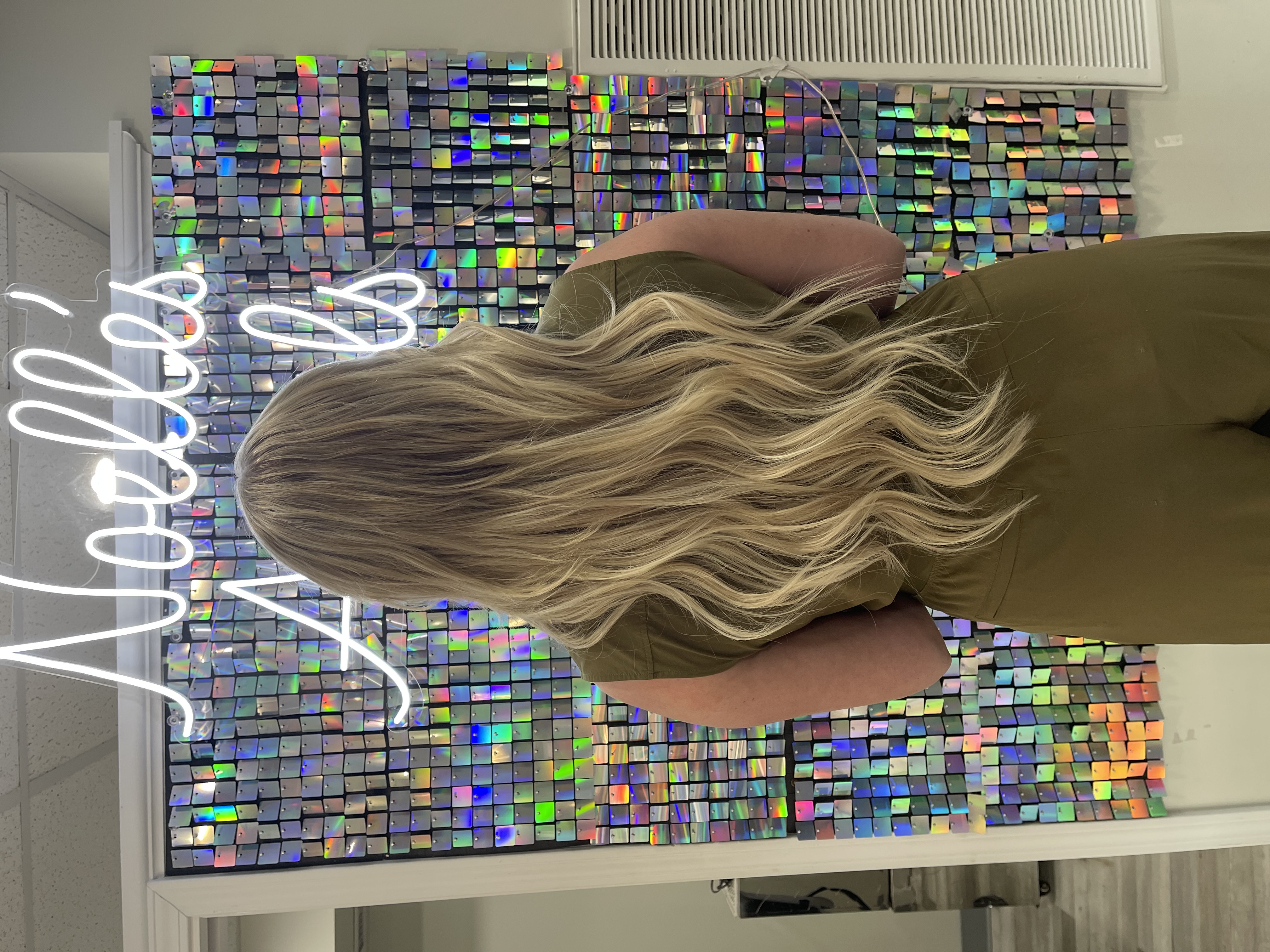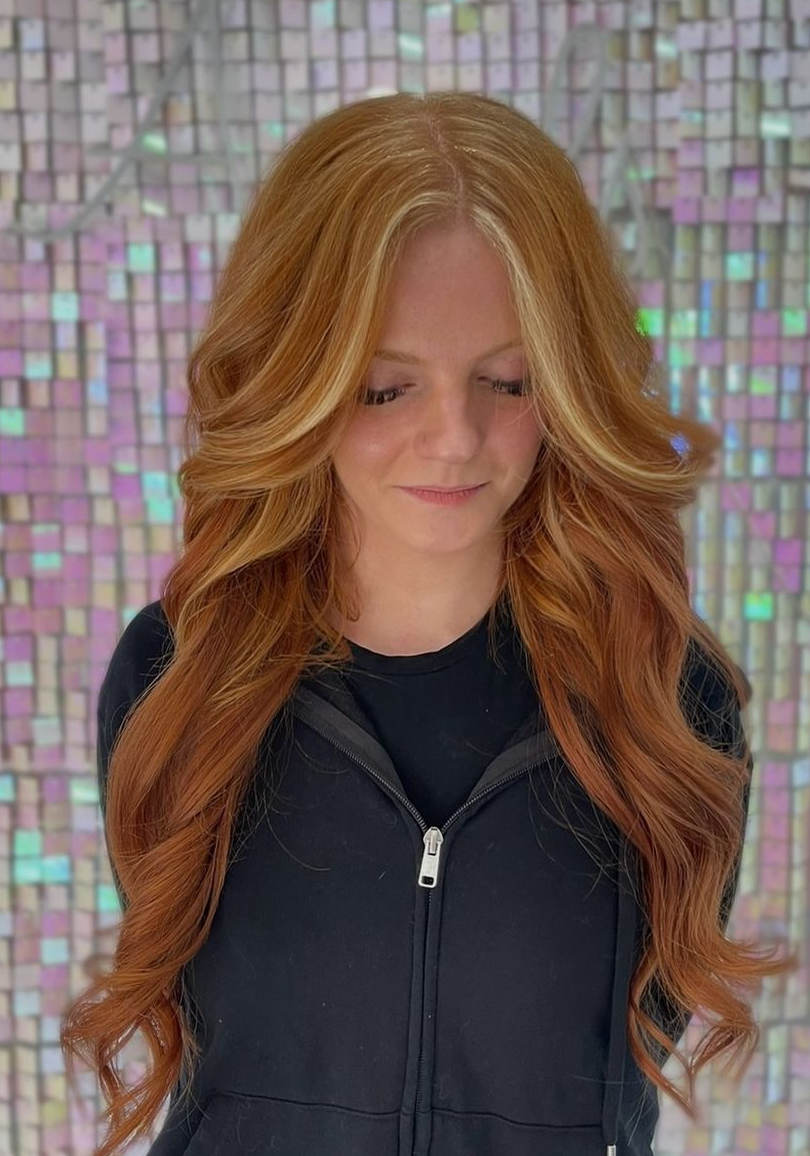What is the difference between balayage and foils when it comes to hair coloring?
Balayage involves hand-painting sections of hair for a more natural, blended look. Foils, on the other hand, use sheets to separate and color specific strands. Balayage gives a sun-kissed effect with less noticeable regrowth, while foils offer more precise highlights.
You may have heard of the balayage highlights hair color technique and wondered what the differences are between a foil highlight for your desired look. The techniques vary, and the outcome is very different. They both offer hair highlights, but the balayage process, which is a French word describing a freehand technique of painting, is often processed in the open air. If you have blonde hair, the bleach contains clay to keep it from drying, while a foil uses aluminum foil as a traditional method and heat conductor to help achieve a dramatic color change and lighten the hair. The "Foilyage" technique also allows the hand-painted highlights to process within aluminum foil; best suited for blonde highlights.

What is a Balayage?
This highlighting technique has been around for decades; you may have first noticed it in "Carrie Bradshaw" of Sex In The City. Carrie, played by Sarah Jessica Parker, had an effortless personal style and hair color that complemented her unique face shape. Her character dawned dark roots, with light waves. The full balayage technique has morphed over the years, especially in recent years, as many opt for a natural balayage using complementary hues such as warm brown hair with golden highlights that are just a few shades lighter than their base color. Those with shorter hair often find this technique ideal. The stylist can use their creativity to paint highlights in areas of the hair that look most natural, achieving a sun-kissed and lightened look! When I balayage, I scrutinize my client's hair color and enhance the areas already lightened by the elements. I will either work with their own natural hair root or color-melt their root with a shade that compliments the highlights. For subtle lifting, open-air processing is recommended. The lightener is heavy, stays in place, and is processed gently. This type of balayage is perfect for those who do not want to spend countless hours in a salon or prefer less upkeep.
What is a foilyage and how is it different from traditional foils?
Similar to a balayage, a lightener is painted free-hand throughout the head; the roots are exposed, and a lightener is placed below them. The foilage is best suited for those who desire blonde highlights on strands of hair but still want the effortless, low-maintenance approach and more natural look that a balayage offers for achieving the final look effect, considering their low maintenance preferences, making it the best option for those seeking this aesthetic. reverse balayage allows for a distinct transition as hair can then be toned and the root shifted to a lighter shade. It is common to color melt the roots to the highlights to erase imperfections and create an even palette.
Exposing Hair Roots for a Lived-In Look
Have you heard the phrase "lived-in" hair color? It simply means that your hair color, including your natural hair color, does not look freshly done! You will have a natural-looking root with highlights that look more natural or grown out. A lived-in color is famously done with precision when painting your hair with color. Many prefer a more natural look, and the upkeep is much easier, equating to less salon visits. With proper hair care, this look can last longer and remain vibrant. In the world of hair coloring, a partial balayage is a great way to save money while creating a beautiful hair color.

How to foil highlighting creates a traditional look
Foiling goes right down to the roots from where the hair grows. Traditional foil highlights and traditional highlights blend into the roots and appear as if one was born with the color. This technique allows for precise placement of individual strands within each section of hair, ensuring you achieve the best results, and can be used on all colors from dark hair to light, and every hue in-between, offering a more dramatic contrast and a more dramatic striking contrast. Each packet of foils may contain different complementary colors or just a few shades (highlight/lowlight). Darker hair processes evenly within a foil since the aluminum foil serves as a heat conductor.
How to avoid bleed marks when highlighting
Wrapping a foil requires lots of practice to avoid slipping and bleed marks. When using bleach, it is important to understand that it swells, keeping the bleach slightly away from the scalp, within the foil, will avoid "skunk marks." There are many ways to foil and the pattern is chosen varies from stylist to stylist. We base the number of foils on our client's desired outcome and it's common to leave hair out in-between.
A Cool Way to Achieve a Total Blonde Look Without on the Scalp Bleach
The Platinum Card Hair Foil Technique
The "Platinum Card" technique is done by applying foils back to back without leaving hair out. This technique is used to replace the double-process bleach and helps to avoid breakage. Once the foils are processed to the desired color, the hair is washed, dried and the stylists will then apply bleach to the roots. The "Platinum Card" offers great control over the bleach, the hair is processed carefully, and works especially well for clients with lots of different color tonality.
Some clients opt for a darker root, so the roots do not necessarily need to be lightened. This is quite time-consuming, it may only have to be done once or twice a year.
Conclusion
Your desired outcome will factor into which technique will render the best end result. It is important to consult with your colorist, evaluate the condition of your hair, and discuss upkeep and products. Do you have a favorite technique? Feel free to share your hair color and pictures below.
Special Advice On Lightening Hair
Note: While there is a lot of fun to be had with a hair color chart and hair dye, if you have an existing hair color on your hair, you might need to be careful about the hair color remover and its process to achieve your baseline hair color to start from. While consulting a professional colorist can help, hair color trends for 2021 or Holiday Hair Color Trends might get you ready for a fun season, taking the right precautions will get you there stress-free.
How to select the right colorist for your balayage?
Scrolling the pages of social media is a great way to find stylists who specialize in balayage hair color. Ask about their continuing education, some colorists will note their special education as well as post pictures of live hair color training.






